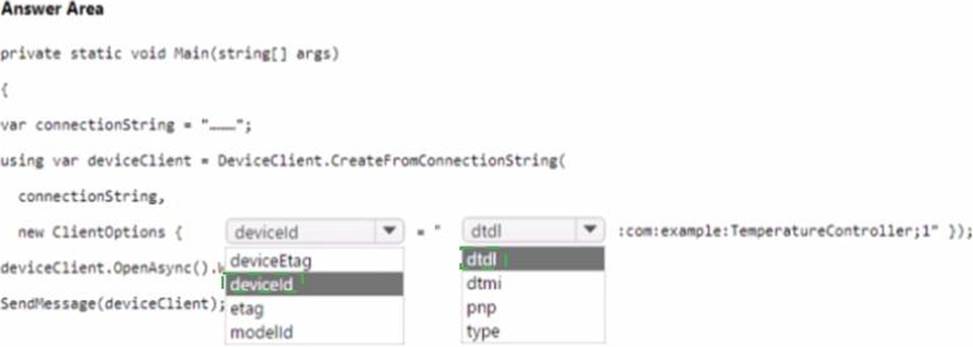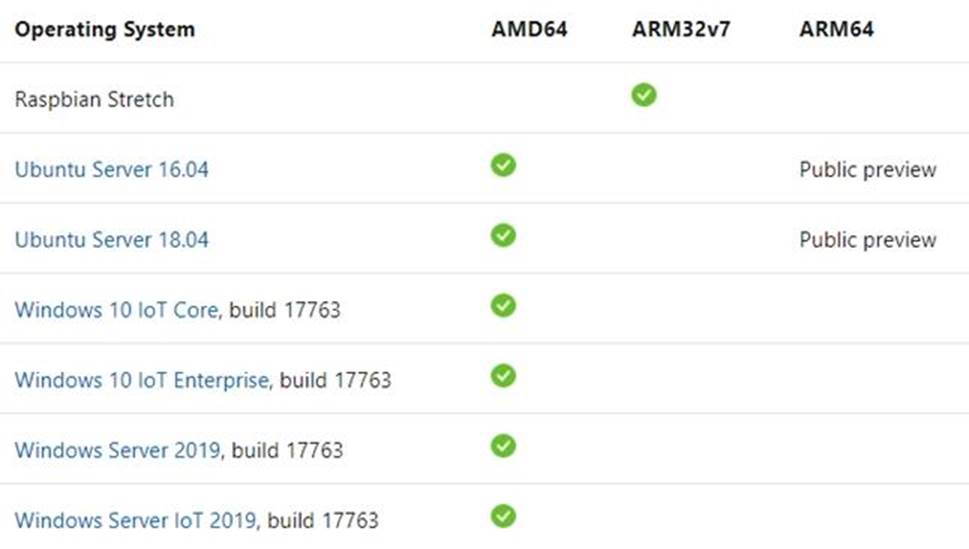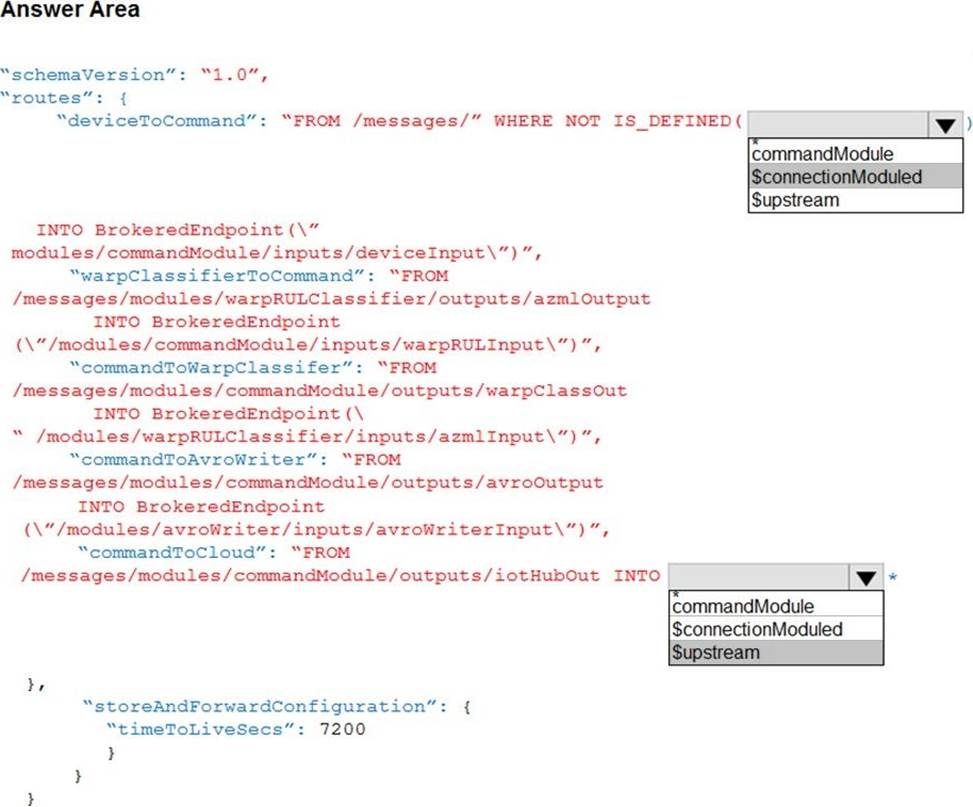Microsoft AZ-220 Microsoft Azure IoT Developer Online Training
Microsoft AZ-220 Online Training
The questions for AZ-220 were last updated at Dec 18,2025.
- Exam Code: AZ-220
- Exam Name: Microsoft Azure IoT Developer
- Certification Provider: Microsoft
- Latest update: Dec 18,2025
You have an IoT device that gathers data in a CSV file named Sensors.csv.
You deploy an Azure IoT hub that is accessible at ContosoHub.azure-devices.net. You need to ensure that Sensors.csv is uploaded to the IoT hub.
Which two actions should you perform? Each correct answer presents part of the solution.
- A . Upload Sensors.csv by using the IoT Hub REST API.
- B . From the Azure subscription, select the IoT hub, select Message routing, and then configure a route to storage.
- C . From the Azure subscription, select the IoT hub, select File upload, and then configure a storage container.
- D . Configure the device to use a GET request to ContosoHub.azure-devices.net/devices/ContosoDevice1/ files/notifications.
You have an Azure loT Hub deployment.
You plan to deploy 1,000 loT devices that will have 1 MB of RAM. The devices will be deployed behind firewalls that block port 443. You need to configure the communication protocol for the devices. The solution must ensure that each device uses unique credentials.
Which protocol should you use?
- A . AMQP
- B . MQTT over WebSockets
- C . MQTT
- D . AMQP over WebSockets
HOTSPOT
You have an Azure 10T solution that includes an loT device named Device1.
You need to enable an loT Plug and Play app for Device1.
How should you complete the device connection? To answer select the appropriate options
m the answer area. NOTE: Each correct selection is worth one point.
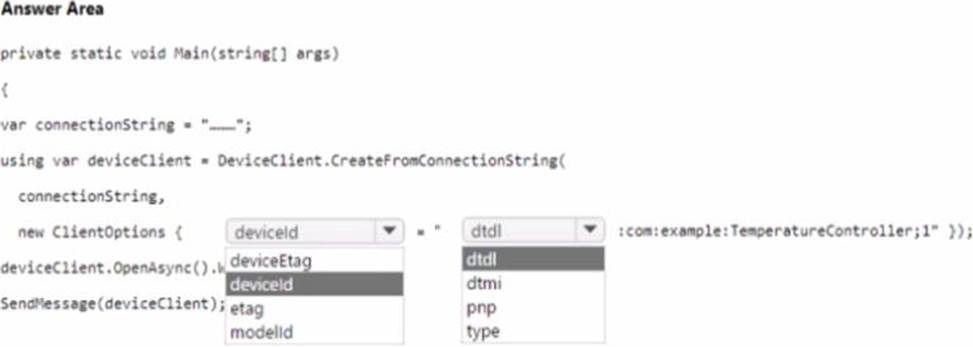
You have the devices shown in the following table.

You are implementing a proof of concept (POC) for an Azure IoT solution.
You need to deploy an Azure IoT Edge device as part of the POC.
On which two devices can you deploy IOT Edge? Each correct answer presents a complete solution. NOTE: Each correct selection is worth one point.
- A . Device1
- B . Device2
- C . Device3
- D . Device4
You have an Azure loT hub named hub1 and five IoT devices. The loT devices connect to hub1 and send data that is formatted by using a proprietary binary format. You need to convert the data to JSON before the data is sent to a downstream service. The solution must minimize administrative effort.
What should you use?
- A . an Azure Service Bus trigger
- B . a message enrichment
- C . an Azure loT Central application
- D . an Azure function
Note: This question is part of a series of questions that present the same scenario. Each question in the series contains a unique solution that might meet the stated goals. Some question sets might have more than one correct solution, while others might not have a correct solution.
After you answer a question in this section, you will NOT be able to return to it. As a result, these questions will not appear in the review screen.
You are developing a custom Azure IoT Edge module.
The module needs to identify the device ID of the local device.
Solution: You configure the module to read the device ID of the device twin.
Does this meet the goal?
- A . Yes
- B . No
You have an Azure IoT Edge module named SampleModule that runs on a device named Device1.
You make changes to the code of SampleModule by using Microsoft Visual Studio Code.
You need to push the code to the container registry and then deploy the module to Device1.
Which two actions should you perform from Visual Studio Code? Each correct answer presents part of the solution. NOTE: Each correct selection is worth one point.
- A . Build and push the SampleModule code to the registry.
- B . Create a deployment for a single device.
- C . Upload to Azure Storage.
- D . Build an loT Edge solution.
- E . Generate a shared access signature (SAS) token for Device 1.
You have an Azure subscription that contains a resource group named RG1.
You need to deploy the Device Provisioning Service. The solution must ensure that the Device Provisioning Service can accept new device enrollments.
You create a Device Provisioning Service instance.
Which two actions should you perform next? Each correct answer presents part of the solution. NOTE: Each correct selection is worth one point.
- A . From the Linked IoT hubs blade of the Device Provisioning Service, link an Azure IoT hub.
- B . From the Azure portal, create a new Azure IoT hub.
- C . From the Manage allocation policy blade of the Device Provisioning Service, configure an allocation policy.
- D . From the Certificates blade of the Device Provisioning Service, upload an X.509 certificate to the Device Provisioning Service.
You need to visualize Azure IoT Hub telemetry data by using Microsoft Power BI.
Which service should you connect to the IoT hub?
- A . Azure Event Grid
- B . SendGrid
- C . Azure Stream Analytics
- D . Azure Notification Hubs
HOTSPOT
You need to configure Azure IoT Edge module routing to ensure that modules route traffic as shown in the following exhibit.
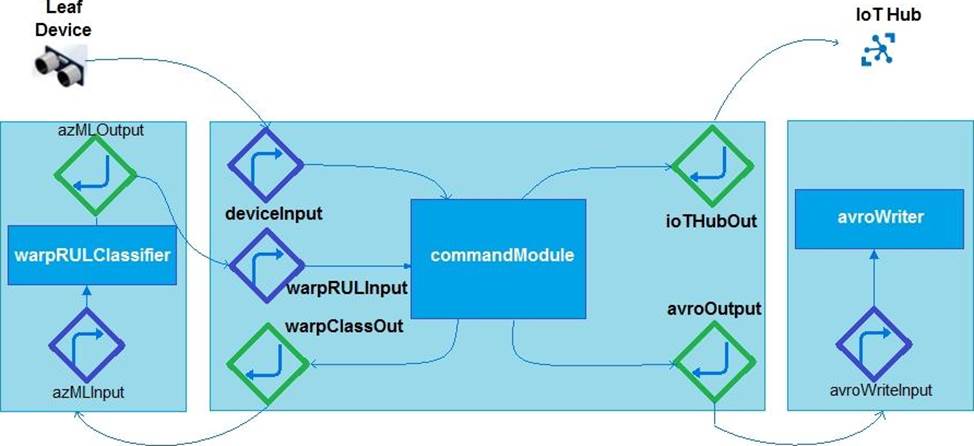
How should you complete the IoT Edge module routes? To answer, select the appropriate options in the answer area. NOTE: Each correct selection is worth one point.
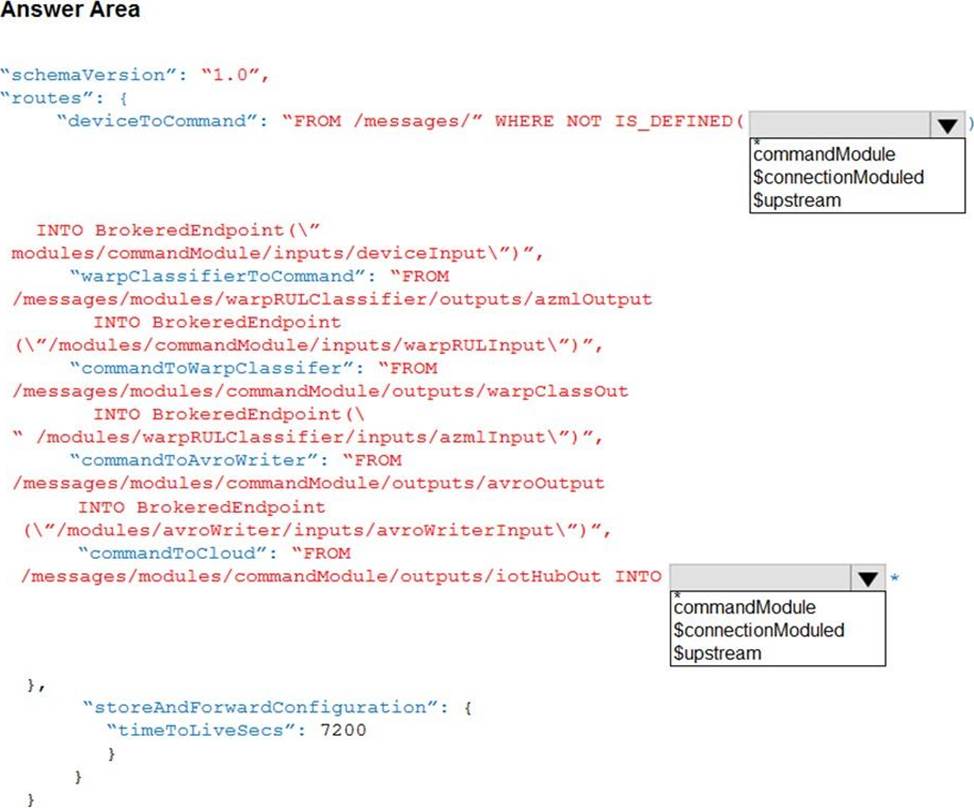
Latest AZ-220 Dumps Valid Version with 88 Q&As
Latest And Valid Q&A | Instant Download | Once Fail, Full Refund

